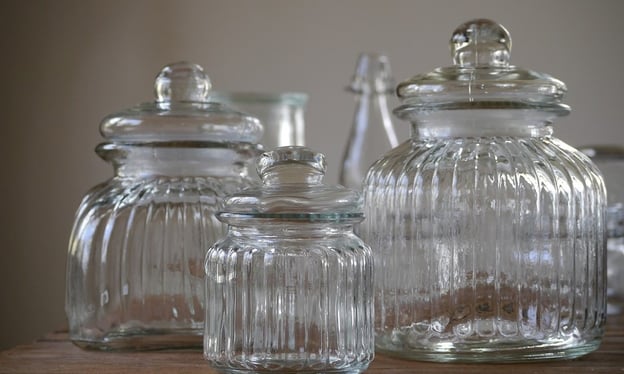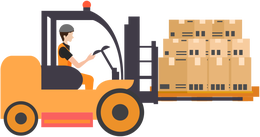When it comes to giving consumers quality food and beverage products, there are several elements that businesses need to consider to ensure they’re operating within the boundaries of the law and Food and Drug Administration (FDA) regulations. Not only do food and drinks need to be safe for consumers in general, but the bottles, packages, and other containers they come in also need to be classified as food-grade safe. That said, how can you be sure your bottles or other containers meet FDA standards?
The supply chain management experts here at Dynamic 3PL can help you determine just that to ensure you’re providing consumers with only the best quality bottles, packages, and containers to house your goods. Please continue reading to learn more, and consider contacting us today if you’re in the market for an SQF (Standard Quality Food) certified warehouse to handle all of your food packaging needs.
Related: 3 Food and beverage packaging trends to keep an eye on in 2021
Understanding the Definitions Involved in Food-Grade Safe Containers
Regulatory bodies worldwide have established a range of critical protocols to determine the components of food-grade safe containers and packaging options, including glass and plastic bottles. In the United States, that responsibility falls under the jurisdiction of the FDA, which regulates everything from microwave ovens to dietary supplements and countless products in-between. The FDA classifies glass and plastic bottles, jars, and jugs as indirect food additives, which come into contact with food as part of processing or packaging but aren’t intended to be added to food directly as an ingredient.
In this case, the term “food-grade” means that the containers used for food packaging are cleared for use in the food production processes. “Food safe” is another critical term in this context and refers to packaging materials that won’t create any food safety hazards when used as intended by the manufacturer. While the two terms are typically used interchangeably, the concepts and corresponding regulations behind them are different.
Related: The Importance of Cleanrooms in the food packaging industry
Food-grade demands that all food components- including surfaces, tools, packaging materials, and more- are safe for human exposure in general. In contrast, food-safe refers to materials that come into contact with the food- which should have no dangerous effects on consumers. The primary difference to note is that the integrity of food-grade containers is not impacted by temperature or environment. For example, a plastic container may be considered food-safe but doesn’t meet the criteria for food-grade classification if it can’t withstand high temperatures.
Companies producing food or beverage products for mass sale on the market need to ensure their bottles, containers, and packaging meet the classifications of “food-grade” to help keep consumers safe from unnecessary risks. However, it’s essential to state that the FDA doesn’t go around providing “food-grade” certificates to businesses. Ensuring food-grade compliance is an all-encompassing process that needs to be considered at every package development, usage, and storage stage to meet regulatory standards.
Are you currently hunting for a new, high-quality supply chain management team to help streamline your packaging, warehousing, and transportation needs this holiday season and beyond? Contact our trusted industry professionals at Dynamic 3PL to learn more.
What to Know About Glass Bottles and Containers

Source: https://www.countryliving.com/shopping/antiques/news/a39351/mason-jar-facts/
According to previous advisements by the FDA, soda-lime glass jars and bottles are not classified as “food additives,” as explored in the above section. Instead, they are classified as Type I and Type III in the glass manufacturing world. Meaning they are considered under the category of GRAS, or Generally Regarded As Safe. Said designation is given to substances and chemicals added to food (either directly or indirectly) that are classified as safe by experts. In short, glass is generally considered food-grade safe and is a quality choice for food and beverage packaging.
Related: 4 Trends in the food and beverage industry to watch in 2021
What to Know About Plastic Bottles and Containers

Unlike glass, plastic bottles, jars, and other containers aren’t as straightforward regarding food-grade safe classification. There is a wide range of plastic resin materials on the market, such as LDPE, PP, PET, HDPE, and more. Some colorant and plastic materials are not classified as food-grade safe, as they’re considered “food additives” by the FDA but do not have GRAS designation by safety experts within the packaging industry. Because of this, companies need to conduct rigorous testing at both the resin and coloring levels to ensure they’re utilizing food-grade bottles and containers to house their products. This testing must be done early and cannot wait until the finished product level without causing unnecessary risk exposure for consumers.
For example, safety experts generally regard clear PET plastic bottles with no colorant added to the material as food-grade safe. Additionally, most HDPE resins containing no added colorant are also generally considered food-grade safe. These factors make PRT and HDPE plastic and resins a suitable option for food and beverage packaging.
The vast majority of plastic bottles, jars, and other packaging marketed as food and beverage containers are classified as food-grade safe since independent third parties have vigorously tested them for that purpose. Companies must be diligent in assuring the safety and quality of not only their food and beverages but also the containers they come in. To confirm the food-grade safety of your bottle and other containers, please reach out to your manufacturer to request a resin specification sheet. Additionally, if the bottle is colored, be sure to ask for a colorant specification sheet as well, which will contain information to answer all of your food-grade safety questions.
The Bottom Line: Rely on Dynamic 3PL to Ensure Your Food-Grade Safe Packaging
If your business is currently in the market for the services of a quality provider of safe, sanitary environments to handle, package, store, and dispatch foods and beverages into the hands of stores and consumers, please don’t hesitate to reach out to our experts here at Dynamic 3PL today. We dedicate ourselves to adhering to and exceeding SQF standards while providing the utmost in customer satisfaction. We believe our clients deserve consistent, practical solutions that can deliver only the highest level of consumer satisfaction. And for more information on the importance of food and beverage packaging, storage, and more, please also consider exploring our range of expertly written educational articles.
Do you require the superior services of an expert supply chain management team to help resolve your packaging, warehousing, and transportation issues? Consider reaching out to our top-quality experts at Dynamic 3PL to learn about our specialty services and how they'll benefit your business today.



